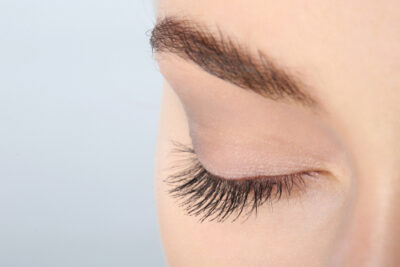If you long for thick, full eyelashes, Latisse may be your answer! Latisse is an eyelash treatment for thin or short eyelashes that, when used regularly, makes them grow thicker, fuller, and longer.

Latisse is great for almost anyone looking for an alternative to using mascara and fake eyelashes to achieve the look they want. But is it for everyone?
Most people who want full eyelashes make good candidates for Latisse. However, there are some people who shouldn’t use it.
There’s also a small chance that the treatment won’t work on you. However, the majority of people who use Latisse achieve lasting results.
Keep reading to learn more about how Latisse works, who should use it, and how to make it work for you!
How Does Latisse Work?
Latisse is a liquid solution that’s used solely for cosmetic purposes. However, the active ingredient is actually used as a glaucoma medication.
It’s called bimatoprost, and it lowers intraocular pressure. Scientists noticed that glaucoma patients who used bimatoprost over a long period of time tended to develop long, full eyelashes.
Shortly after, a unique formula using bimatoprost was created to treat eyelashes exclusively. Unlike glaucoma medication, which you administer directly to the eye, you use latisse on the upper eyelid.
You will use an applicator to apply the solution to the skin near the base of your eyelashes. Using Latisse properly and consistently is the best way to achieve optimum results.
Of course, no medication is for everyone, and there are some people who shouldn’t use Latisse.
Who is a Good Candidate for Latisse?
The best candidates for Latisse are patients who have thin eyelashes and want thicker ones. Most people who want Latisse make good candidates, but there are some exceptions.

You shouldn’t use Latisse if you have sensitive skin or an allergy to any of the ingredients in Latisse. Before using Latisse for the first time, it’s best to apply a very small amount to your skin to make sure you don’t have a reaction before using it regularly.
You also shouldn’t take Latisse if you’re pregnant or nursing. If you have any eye conditions, talk to your doctor to know if it’s right for you, as certain eye conditions may affect your ability to use Latisse safely.
Before using Latisse, your eye doctor will tell you about possible side effects to make an informed decision. Some of the side effects include minor skin irritation and the color of your irises changing.
If you’ve consulted your doctor and they believe it’s safe to prescribe you Latisse, you’re almost guaranteed to get good results if you use the medication correctly.
Enhancing Your Chances of Success
The best way to make sure you get the best results from Latisse is to use it consistently and exactly as instructed. The medication comes with detailed instructions, and it’s important that you follow them closely.
Also, be careful to never touch the dropper to any surface once you have it open, and never reuse an applicator. Never use Latisse on your lower eyelids or on any other part of your body besides your upper eyelids.

After using, blot any excess solution. You can use Latisse any time of day, but it’s best to apply it before bed after removing your makeup and contact lenses.
If using during the day, be sure to wait at least fifteen minutes after applying Latisse to put your contact lenses in. When following the instructions and using Latisse regularly, most patients see results after a few months.
However, there is a small chance that Latisse may not work for you.
What if Latisse Doesn’t Work?
Latisse works for the majority of patients who use it, but how long it takes to show results can vary. Some patients may notice that their lashes look fuller after one or two months.
However, as many as fifty percent of patients won’t see results until after four months. If you’re on month three of using Latisse and your eyelashes don’t look any longer or fuller, don’t worry!

Keep using Latisse as instructed, and you’re likely to achieve the longer and fuller lashes you desire. You should keep in mind that there are a small number of patients who just won’t experience eyelash growth when using Latisse.
Unfortunately, there’s no way to know whether or not Latisse will work for you unless you use it for four months. With that said, Latisse does work for the majority of patients.
If you happen to fall into the group of patients who don’t experience eyelash growth from Latisse, you’ll know if you don’t see any results after using the medication for four months. In that case, you can simply stop using the medication.
As long as you’re a good candidate for Latisse, there’s no harm in using it, even if it doesn’t end up working.
Do you want to learn more about Latisse and find out if it’s right for you? Schedule an appointment at Sugiki Portis Eye Center in Honolulu, HI, today to talk to one of our specialists about Latisse!





